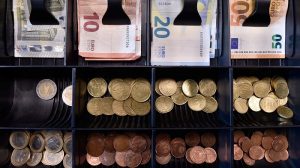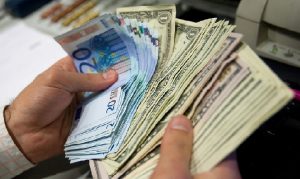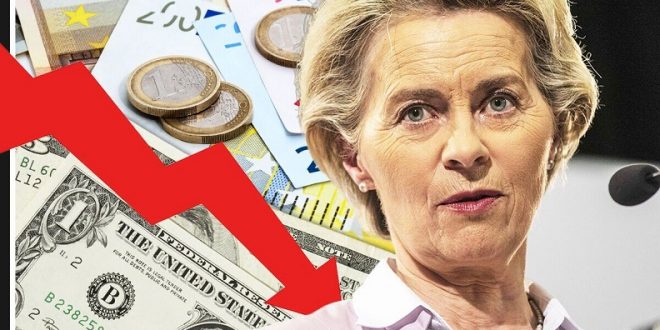14-07-2022
BRUSSELS/ LONDON: The euro has fallen below the symbolic level of $1.00 for the first time since December 2002, weighed down by the darkening economic outlook for the single-currency area and a possibility of a complete stoppage in Russian gas supplies.
 The euro was pushed down to $0.9998 on Wednesday after official data showed a surge in US inflation in June, increasing expectations for a further tightening of interest rates by the US Federal Reserve.
The euro was pushed down to $0.9998 on Wednesday after official data showed a surge in US inflation in June, increasing expectations for a further tightening of interest rates by the US Federal Reserve.
An increase in borrowing costs on the other side of the Atlantic makes the US dollar more attractive to investors.
“Gas rationing, stagflation, an expected recession, they are all good reasons to be bearish on the euro,” said Stuart Cole, the head macro economist at Equiti Capital in London before the euro crossed that threshold.
He said that these factors will make it harder for the European Central Bank (ECB) to raise interest rates, further widening the interest-rate differential with the United States.
Euro’s performance history
Since becoming available freely in 1999, the single currency has spent very little time below parity. In fact, the last time it did so was between 1999 and 2002, when it sank to a record low of $0.82 in October 2000.
Within its relatively short 20-year history, the euro is the second-most sought-after currency in  global foreign exchange reserves and daily turnover in the euro/dollar is the highest among currencies in the global $6.6 trillion-per-day market.
global foreign exchange reserves and daily turnover in the euro/dollar is the highest among currencies in the global $6.6 trillion-per-day market.
The euro’s slide is a headache for the ECB. Allowing the currency to fall only increases the record-high inflation the ECB is battling to contain. But trying to shore it up with higher interest rates could exacerbate recession risks.
The ECB has so far played down the issue, arguing that it has no exchange rate target, even if the currency does matter.
Also on a trade-weighted basis against its trade partners’ currencies, the euro is down only 3.6 percent this year.
Meanwhile, the euro has hit parity with the United States dollar and stock markets fell as the prospect of further central bank tightening and worries about the health of economies worldwide unnerved investors.
By 10:00 GMT on Tuesday, the euro was at a low of $1, that weakest in more than 20 years.
The US dollar’s role as the go-to currency for investors worried about the economic outlook has been boosted in recent weeks, with the US currency roaring to two-decade highs against multiple currencies.
 The euro has been particularly vulnerable given the effect of a continuing spike in natural gas prices on the regional economy and the war in Ukraine. Meanwhile, the European Central Bank has been behind rivals in raising interest rates.
The euro has been particularly vulnerable given the effect of a continuing spike in natural gas prices on the regional economy and the war in Ukraine. Meanwhile, the European Central Bank has been behind rivals in raising interest rates.
Mizuho analysts said the move towards parity was happening as “recession in the eurozone is priced in”, and said the backdrop suggested little to improve risk sentiment.
SG Futures said this is a “catastrophe” for the European Union as energy imports run the risk of becoming pricier.
“Energy supply is already unaffordable and as we head into winter it’ll likely get even worse,” it added on a tweet.
The biggest single pipeline carrying Russian gas to Germany, the Nord Stream 1, began annual maintenance on Monday, with flows expected to stop for 10 days.
With tensions between Europe and Russia at their highest in decades over the war in Ukraine, officials are concerned that gas supplies may not be resumed on July 21 once the scheduled maintenance work is complete exacerbating Europe’s energy supply crunch and potentially speeding a recession. (Int’l News Desk)
 Pressmediaofindia
Pressmediaofindia




